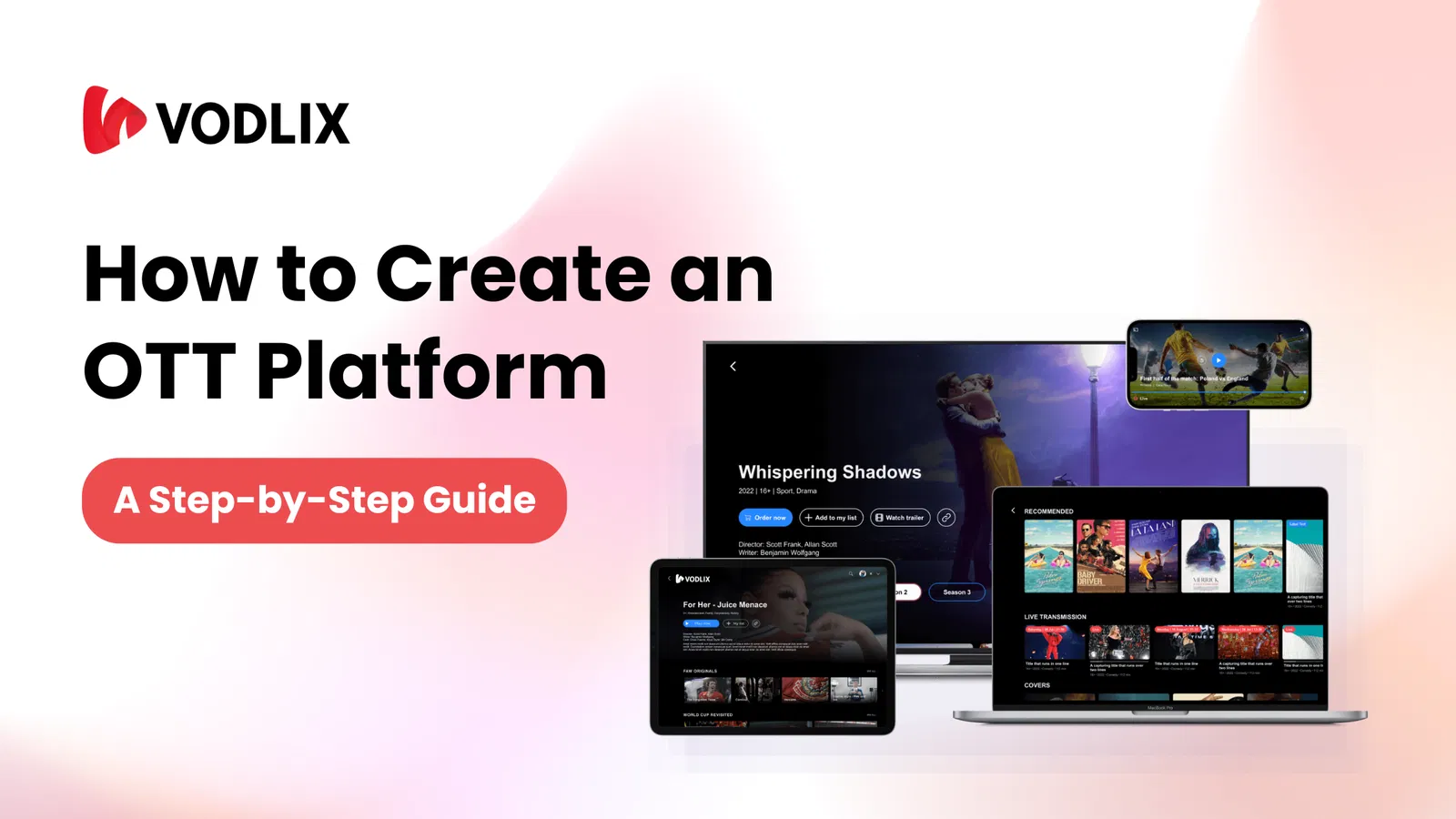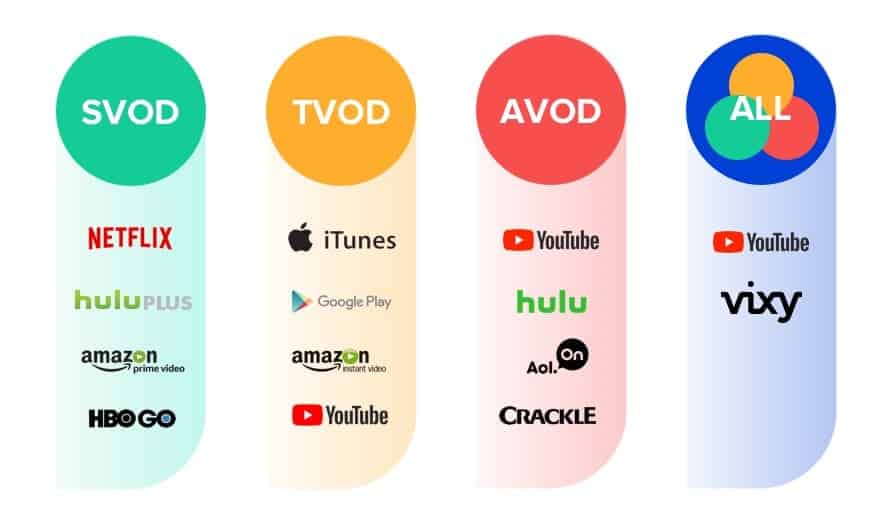As the demand for online streaming platforms grows, many businesses are eager to launch their own OTT (Over-The-Top) platforms to deliver content directly to viewers without the need for traditional broadcast or cable. Whether you're looking to create a Netflix-style service, a live streaming platform, or a niche content hub, developing an OTT platform requires careful planning, technical know-how, and strategic decision-making. This guide will take you through each step needed to build a successful OTT platform, from concept to launch.
Introduction to OTT Platforms
An OTT platform delivers video content to users without the need for traditional cable or satellite television services. These platforms leverage the internet to stream content directly to users' devices, including smartphones, smart TVs, tablets, and desktops. OTT platforms cover a range of media types, including movies, series, live events, and educational videos.
Why Start an OTT Platform?
The OTT market is experiencing impressive growth due to its versatility and high user demand. OTT platforms provide:
Direct-to-Consumer Reach: Establish direct relationships with your audience, bypassing traditional intermediaries.
Flexible Monetization Models: Choose from various monetization strategies to suit different audience preferences.
Branding Opportunities: Build brand recognition and control your content distribution.
A Step-by-Step Guide to Create an OTT Platform
Step 1: Market Research and Choosing Your Niche
The first step in creating an OTT platform is to conduct market research and choose a specific niche. By defining a niche, you can cater to a particular audience’s needs and differentiate your platform from the competition.
Tips for Niche Selection:
Identify Gaps in the Market: Look for content that is popular but underserved. For instance, a cooking-focused OTT platform that offers live-streamed cooking classes could tap into a unique audience segment.
Analyze Competitors: Study other OTT services in your chosen niche. For example, if you're interested in launching a fitness streaming platform, analyze competitors like Peloton and Daily Burn.
Audience Preferences: Gather data on your target audience’s age, location, and preferred devices. The audience for a children’s educational platform will differ significantly from a platform that streams live sports.
Step 2: Decide on a Monetization Model
Choosing the right monetization model is crucial for generating revenue. Popular OTT platforms use different monetization approaches based on their audience and content type.
Monetization Models Explained:
Subscription Video on Demand (SVOD): Users pay a monthly or yearly subscription for unlimited access. Netflix and Disney+ are examples of successful SVOD platforms.
Pros: Predictable revenue, loyal user base.
Cons: Requires a large content library to keep users engaged.
Advertising-Based Video on Demand (AVOD): Content is free to watch but features ads, similar to YouTube.
Transactional Video on Demand (TVOD): Users pay per video or event, like renting a movie or paying for a live concert stream.
Pros: One-time purchases, ideal for exclusive content.
Cons: Limited revenue unless new content is frequently added.
Hybrid Model: Combines SVOD and AVOD, offering both subscription-based content and free content with ads.
Consider your audience and the type of content you offer when selecting a monetization model. Many platforms start with one model and expand to others over time.
Step 3: Selecting the Right Tech Stack
The tech stack for an OTT platform includes video hosting, a Content Delivery Network (CDN), digital rights management, and user interface design. Choosing reliable technologies ensures smooth performance and security.
Essential Tech Stack Components:
Video Hosting and Storage Solutions: Choose a scalable and secure hosting provider, like Amazon Web Services (AWS) or Google Cloud. For smaller-scale platforms, services like Vimeo OTT offer a more manageable entry-level option.
Content Delivery Network (CDN): CDNs like Akamai or Cloudflare distribute content globally, reducing buffering and enhancing video quality.
Digital Rights Management (DRM): DRM software like Widevine or PlayReady protects your content from unauthorized access and piracy.
Streaming Protocols: For seamless playback, use adaptive streaming protocols like HTTP Live Streaming (HLS) or Dynamic Adaptive Streaming over HTTP (DASH). These protocols automatically adjust video quality based on the viewer’s internet speed.
Example Tech Stack:
AWS: For scalable video hosting.
Cloudflare CDN: Ensures fast delivery worldwide.
Widevine DRM: Protects content from unauthorized access.
Step 4: Designing the User Interface and Experience (UI/UX)
A user-friendly interface is essential for retaining viewers. A clean, intuitive layout makes it easy for users to find and enjoy content.
Best Practices for UI/UX Design:
Responsive Design: Ensure the platform works across devices—smart TVs, tablets, mobile phones, and desktops.
Easy Navigation: Use clear categories, search functionality, and filters so users can find content quickly.
Personalized Recommendations: Many OTT platforms use AI-based recommendation engines to suggest content based on users’ viewing history.
Accessibility Features: Make your platform accessible by adding closed captions, audio descriptions, and color contrasts.
For example, Netflix’s interface offers intuitive navigation with personalized recommendations, allowing users to find content tailored to their preferences quickly.
Step 5: Develop an OTT App for Multi-Device Access
An OTT platform that supports multiple devices will reach a larger audience and enhance user convenience. You can either develop native apps for each operating system (iOS, Android, smart TVs) or use cross-platform development tools like React Native or Flutter.
Device Support Essentials:
Mobile Apps: Make apps available for Android and iOS devices.
Smart TVs: Support streaming on popular devices like Roku, Apple TV, Amazon Fire Stick, and Samsung Smart TVs.
Desktop: Offer a web-based version for desktop users.
Consider developing a Progressive Web App (PWA) as an alternative to native apps. PWAs offer similar functionality to native apps but run directly from a browser, providing a seamless experience across devices without the need for downloads.
Step 6: Implement Secure Payment Solutions
Providing secure payment options is vital for building user trust. Choose payment gateways that are safe, reliable, and offer support for multiple currencies.
Recommended Payment Solutions:
Stripe: Popular for its easy integration and support for various currencies.
PayPal: Widely trusted and ideal for international transactions.
Subscription Management: Platforms like Recurly or Chargebee manage recurring subscriptions, upgrades, and cancellations.
Step 7: Building Security into Your OTT Platform
OTT platforms must prioritize content protection, as piracy is a common issue. Incorporate security features to ensure that only authorized users access your content.
Security Measures to Consider:
DRM and Watermarking: Digital Rights Management (DRM) tools and visible watermarks discourage unauthorized sharing.
SSL Encryption: Encrypt data during transmission to protect against breaches.
Multi-Factor Authentication: Adding layers of security for user accounts deters unauthorized access.
Example: Disney+ uses DRM and SSL encryption extensively to secure its content and data.
Step 8: Integrate Analytics and User Engagement Tools
Analytics help you understand viewer behavior, which is essential for optimizing content and marketing strategies.
Key Metrics to Track:
Viewership Data: Track views, session duration, and drop-off points.
User Retention and Engagement: Monitor retention rates and identify ways to improve engagement.
Content Performance: Assess which content is most popular and tailor future releases accordingly.
Tools like Google Analytics, Mixpanel, and Amplitude can provide detailed insights into user engagement and content performance.
Step 9: Launch and Marketing Strategy
Once your OTT platform is ready, a strategic marketing plan is essential to reach and attract users.
Marketing Tactics:
SEO and Content Marketing: Publish blog posts, case studies, and video previews to improve organic reach.
Social Media: Engage users on platforms like Instagram, Twitter, and YouTube.
Influencer Partnerships: Collaborate with influencers relevant to your niche to promote your platform.
Email Marketing: Keep users informed about new releases, updates, and special offers.
Why Choose Vodlix for Your OTT Platform
Building an OTT platform requires expertise and a robust infrastructure. Vodlix provides an all-in-one OTT solution that covers everything from streaming technology to payment processing and security. With customizable templates, cross-platform compatibility, and analytics support, Vodlix helps you create a scalable, user-friendly OTT platform without the hassle of developing from scratch.
Features Vodlix Offers:
End-to-End OTT Solution: From content management to monetization, Vodlix covers it all.
Advanced Video Player: Enjoy adaptive streaming, multiple quality levels, and offline viewing.
Secure DRM and Anti-Piracy Protection: Protect your content with Vodlix's advanced DRM technology.
Multi-Device Compatibility: Reach users on mobile, desktop, smart TVs, and streaming devices.
Scalable Infrastructure: Vodlix’s cloud-based solution grows with your audience.
Conclusion
Creating an OTT platform involves thorough planning, from defining your niche and choosing a monetization model to implementing robust security and launching a multi-device app. With Vodlix’s all-in-one solution, you can build a successful OTT platform that captivates and retains audiences. Ready to get started? Contact Vodlix today and take the first step toward launching your own OTT service!




.png)


